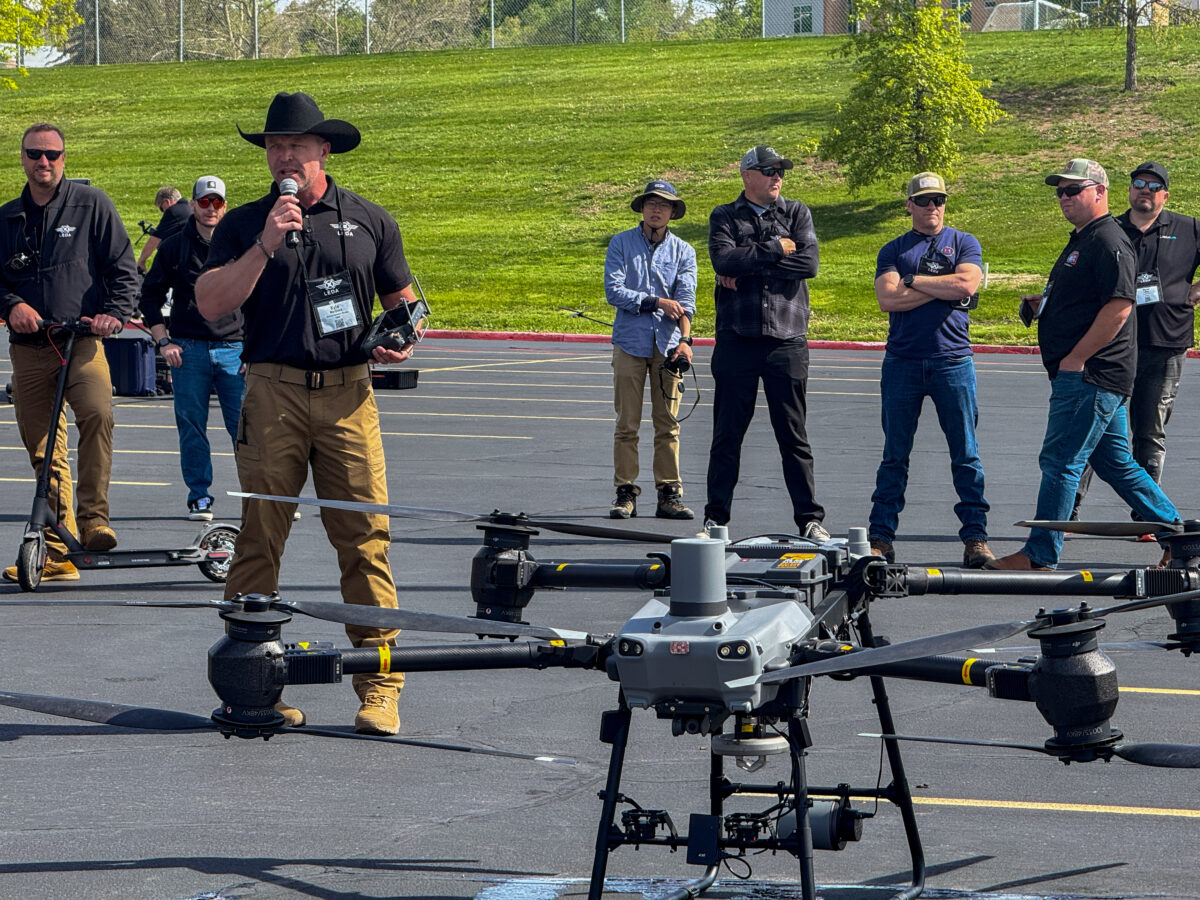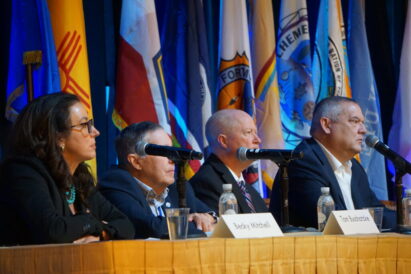Weber County hosts national drone training event for public safety officials
- Public safety agencies from across the U.S. participated in a drone technology training event in the Ogden area during the week of May 5, 2025.
- Public safety agencies from across the U.S. participated in a drone technology training event in the Ogden area during the week of May 5, 2025.
- Public safety agencies from across the U.S. participated in a drone technology training event in the Ogden area during the week of May 5, 2025.
OGDEN — More than 260 public safety professionals from agencies across the country gathered in Ogden this week for a national drone training event hosted by the Weber County Sheriff’s Office in partnership with the nonprofit Law Enforcement Drone Association.
According to Brandon Karr, an executive board member and public information officer for LEDA, the aim of the weeklong event is to educate law enforcement agencies — and agencies within the greater public safety nexus, such as fire departments, emergency medical services and search and rescue teams — about the use of drone technology and to reinforce best practices.
Agencies traveled from as far away as South Carolina and Oregon to participate, with many Utah agencies joining the fray and events being held at Weber State University and nearby.
“This week, we’ve been focusing a lot on search and rescue tactics,” Karr told the Standard-Examiner. “Since there’s a lot of search and rescue that goes on up here, it’s really great for all these other agencies that are coming from outside of Utah where there’s not as much to teach them how to do it the right way, with people that do it every day.”
Throughout the event, participants were given the opportunity to learn new tactics and earn flight proficiency certifications from LEDA, based on the National Institute of Standards and Technology standards. In addition to search and rescue, LEDA instructors are covering SWAT support, crash and crime scene reconstruction, disaster mapping and also legal issues surrounding drone operations.
“They’re talking about, what can law enforcement legally do? When do we need a warrant? When do we not need a warrant, right?” Karr said. “Those are all things that are incredibly important because we need to be good stewards of not only protecting the public, but also protecting the public’s privacies.”
Karr said that the use of drone technology in the public safety sector has grown exponentially over the past decade, with major incident response and search and rescue being the primary areas of application. He added that the use of drones as first responders is the current frontier of the field.
“You can have drones that are pre-positioned in docking stations all throughout your jurisdiction, and those drones can autonomously launch and fly to calls for service before first responders are ever able to get there,” Karr said.
Using drones in this manner can boost systemwide service levels, according to Karr, who stated that drones can clear calls for services and eliminate the need to send first responders to the scene more than 25% of the time.
“It’s the ultimate deescalation,” Karr said. “Over 70% of the time, the drone is able to get there on scene within less than 90 seconds. With average response times of seven to ten minutes, that real-time data lets us know whether we need to run lights and sirens or slow down because everything seems fine for now.”
Karr believes that this use of drone technology will become as common “as a patrol car or a fire engine” at departments around the nation in the not-too-distant future.
“There’s a lot of really great value there and it doesn’t cost that much to be able to stand one up. So, that’s where I think the future is headed,” Karr added.
LEDA’s Utah training event wraps up Friday. Agencies interested in future LEDA events can contact the association at info@ledauas.org.









